.gif)
Union Square (Baltimore)
Encyclopedia

Baltimore
Baltimore is the largest independent city in the United States and the largest city and cultural center of the US state of Maryland. The city is located in central Maryland along the tidal portion of the Patapsco River, an arm of the Chesapeake Bay. Baltimore is sometimes referred to as Baltimore...
, Maryland
Maryland
Maryland is a U.S. state located in the Mid Atlantic region of the United States, bordering Virginia, West Virginia, and the District of Columbia to its south and west; Pennsylvania to its north; and Delaware to its east...
, United States
United States
The United States of America is a federal constitutional republic comprising fifty states and a federal district...
.
It dates to the 1830s and includes a historic district of houses and commerce buildings.
Overview
Named for the graceful park at its center, Union Square is a diverse urban setting - home to art galleries, artist studios, H.L. Mencken’s life-long residence, and spacious three-story Italianate and VictorianVictorian architecture
The term Victorian architecture refers collectively to several architectural styles employed predominantly during the middle and late 19th century. The period that it indicates may slightly overlap the actual reign, 20 June 1837 – 22 January 1901, of Queen Victoria. This represents the British and...
rowhouses. On the historic ground of Southwest Baltimore known to locals as Sowebo
Sowebo
Sowebo is a community-chosen name for a historic area in the South West of Baltimore City.Sowebo encompasses the neighborhoods of Union Square and Hollins Market. At one point, the area suffered from decades of urban decay but, in recent years, this community has seen increasing gentrification...
, Union Square is less than a mile from Camden Yards and within walking distance of the Inner Harbor
Inner Harbor
The Inner Harbor is a historic seaport, tourist attraction, and iconic landmark of the City of Baltimore, Maryland, United States. Described by the Urban Land Institute in 2009 as “the model for post-industrial waterfront redevelopment around the World.” The Inner Harbor is actually the end of the...
, B&O Railroad Museum
B&O Railroad Museum
The B&O Railroad Museum is a museum exhibiting historic railroad equipment in Baltimore, Maryland, originally named the Baltimore & Ohio Transportation Museum when it opened on July 4, 1953. It has been called one of the most significant collections of railroad treasures in the world and has the...
, Ravens Stadium
M&T Bank Stadium
M&T Bank Stadium is a multi-purpose football stadium located in Baltimore, Maryland. It is the home of the Baltimore Ravens of the National Football League. The stadium is immediately adjacent to Oriole Park at Camden Yards, the home of the Baltimore Orioles. Served by the Hamburg Street station of...
, and the University of Maryland, Baltimore
University of Maryland, Baltimore
University of Maryland, Baltimore, was founded in 1807. It comprises some of the oldest professional schools in the nation and world. It is the original campus of the University System of Maryland. Located on 60 acres in downtown Baltimore, Maryland, it is part of the University System of Maryland...
. The state-of-the-art UMB Biotech Park on West Baltimore Street is a recent addition, with portions still under construction. A public golf course is nearby, next to the newly-renovated Montgomery Park office building. Access to I-83, I-95
Interstate 95 in Maryland
Interstate 95 in Maryland is a major highway that runs diagonally from northeast to southwest, from Maryland's border with Delaware, to the Woodrow Wilson Bridge, briefly entering the District of Columbia before reaching Virginia...
and the MARC Train
MARC Train
MARC , known prior to 1984 as Maryland Rail Commuter Service, is a regional rail system comprising three lines in the Baltimore-Washington Metropolitan Area. MARC is administered by the Maryland Transit Administration , a Maryland Department of Transportation agency, and is operated under contract...
to Washington, D.C.
Washington, D.C.
Washington, D.C., formally the District of Columbia and commonly referred to as Washington, "the District", or simply D.C., is the capital of the United States. On July 16, 1790, the United States Congress approved the creation of a permanent national capital as permitted by the U.S. Constitution....
are minutes away.
Union Square Park
A 2.5 acres (10,117.2 m²) public space at the west side of the neighborhood, Union Square Park dates from 1847 and contains the community’s signature structure, a Greek RevivalGreek Revival architecture
The Greek Revival was an architectural movement of the late 18th and early 19th centuries, predominantly in Northern Europe and the United States. A product of Hellenism, it may be looked upon as the last phase in the development of Neoclassical architecture...
Pavilion (1850) with fluted iron columns. Other features include the H. L. Mencken Memorial Fountain (1976) and curved walkways with park benches. Throughout the year, there are many impromptu events in the Square, including neighborhood dinners, outdoor movies
Outdoor cinema
An outdoor cinema consists of a digital or analog movie projector, scaffolded construction or inflatable projection screen, and sound system....
, tag sales, Easter egg
Easter egg
Easter eggs are special eggs that are often given to celebrate Easter or springtime.The oldest tradition is to use dyed or painted chicken eggs, but a modern custom is to substitute chocolate eggs, or plastic eggs filled with confectionery such as jelly beans...
hunts, Halloween pumpkin
Jack-o'-lantern
A jack-o'-lantern is typically a carved pumpkin. It is associated chiefly with the holiday of Halloween and was named after the phenomenon of strange light flickering over peat bogs, called ignis fatuus or jack-o'-lantern...
carvings, and various other parties.
Hollins Market
A vital part of the community, Hollins MarketHollins Market
Hollins Market is the name of the oldest existing public market building in the city of Baltimore, Maryland. It is a contributing property to the Union Square-Hollins Market Historic District....
was built in the Italianate style in 1838 at the east side of the neighborhood and is Baltimore’s oldest home to food merchants.

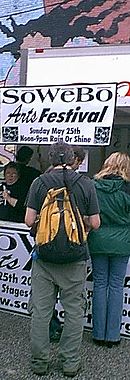
Mencken House
The H. L. Mencken HouseH. L. Mencken House
H. L. Mencken House was a home of Baltimore's famous son, Henry Louis Mencken, who lived here from 1883 until his death in 1956.Designated a National Historic Landmark in 1985, this Italianate brick row house at 1524 Hollins Street was the home of one of Baltimore’s most famous citizens—noted...
is located at 1524 Hollins Street. Baltimore's famous son, Henry Louis Mencken, lived here from 1883 until his death in 1956. More details in History section (below).
Arts festival
An annual event - the Sowebohemian Arts Festival - is held in the streets around Hollins Market on the Sunday afternoon of the Memorial DayMemorial Day
Memorial Day is a United States federal holiday observed on the last Monday of May. Formerly known as Decoration Day, it originated after the American Civil War to commemorate the fallen Union soldiers of the Civil War...
weekend.
Other highlights
Also in the Union Square Historic District, attractions include annual events such as the Union Square Christmas Cookie Tour plus the Black Cherry Puppet Theater, the Enoch PrattEnoch Pratt
Enoch Pratt was an American businessman in Baltimore, Maryland, a Unitarian, and a philanthropist.-Biography:...
Free Library No. 2 Branch (1886), and Sowebo Arts, Inc.
Nearby attractions
Other nearby sites of interest include the B&O Railroad MuseumB&O Railroad Museum
The B&O Railroad Museum is a museum exhibiting historic railroad equipment in Baltimore, Maryland, originally named the Baltimore & Ohio Transportation Museum when it opened on July 4, 1953. It has been called one of the most significant collections of railroad treasures in the world and has the...
, the Lithuanian Hall
Lithuanian Hall
The Lithuanian Hall , also known as Lith Hall, is the home of the Lithuanian Hall Association. It is a private club located in Union Square, Baltimore and serves as a recreation center and meeting house for social events, including dance nights, musical events, community suppers and cultural events...
, Carroll Park, the Mount Clare Museum, the Babe Ruth
Babe Ruth
George Herman Ruth, Jr. , best known as "Babe" Ruth and nicknamed "the Bambino" and "the Sultan of Swat", was an American Major League baseball player from 1914–1935...
Museum, the Irish Shrine and Railroad Workers Memorial Museum, and the Edgar Allan Poe House and Museum
Edgar Allan Poe House and Museum
The Edgar Allan Poe House and Museum, located at 203 Amity St. in Baltimore, Maryland, is the former home of American writer Edgar Allan Poe in the 1830s. Now open as a museum, the small unassuming structure is a typical row home, and also houses the Edgar Allan Poe Society of Baltimore. It was...
.
Historic district
The Union Square-Hollins Market Historic District is a dense area of rowhouses and commercial structures located approximately 10 blocks west of the Inner HarborInner Harbor
The Inner Harbor is a historic seaport, tourist attraction, and iconic landmark of the City of Baltimore, Maryland, United States. Described by the Urban Land Institute in 2009 as “the model for post-industrial waterfront redevelopment around the World.” The Inner Harbor is actually the end of the...
in Baltimore. The district contains approximately 1,321 buildings with about 31 structures which do not contribute to the district. There are two major features in the district: Union Square Park, a speculative park and housing development of the 1840s, and Hollins Market, an Italianate style market house built in 1838 and 1864. The remainder of the district developed after 1830 mainly as housing for workers in nearby industries and consist of low scale, two and three story brick vernacular dwellings while larger, high-style rowhouses surround the park.
The Union Square-Hollins Market Historic District was listed on the National Register of Historic Places
National Register of Historic Places
The National Register of Historic Places is the United States government's official list of districts, sites, buildings, structures, and objects deemed worthy of preservation...
in 1983.
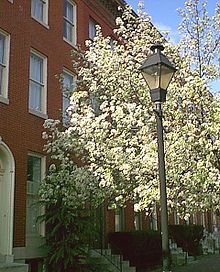
Real estate
On the Square and on nearby streets, spacious three-story rowhouses predominate. Most are pre- and post-Civil War Italianate in style, but there are many examples of Early Victorian Greek Revival and Late Victorian Romanesque RevivalRomanesque Revival architecture
Romanesque Revival is a style of building employed beginning in the mid 19th century inspired by the 11th and 12th century Romanesque architecture...
. A majority of the homes have ten- to fourteen-foot ceilings, tall distinctive windows, wood floors, and plaster walls. Exteriors are brick and mortar facades with attractive cornices and marble steps. On the side streets and alleys there are an additional variety of charming two-story and two-story-with-attic rows. House prices range from $40,000 to $400,000.
Community
An uncommon synergy prevails in the neighborhood as residents, both longtime and newly-arrived, work together through various committees and forums to enhance the area’s quality of life. Toward that end, Union Square is also actively engaged in outreach with other nearby neighborhoods and non-profit groups. This historic neighborhood is marked by classic architecture, period street lamps, brick sidewalks and stately row homes.Southwest Baltimore Charter School
Opened in August 2005, the Southwest Baltimore Charter School (SBCS) is located at 31 South Schroeder Street. Its K – 4 enrollment serves a diverse population in southwest Baltimore City. SBCS accomplishments include increases in reading performance across all grade levels and student performances at Taste the Arts, a Young Audiences Gala and fundraiser.Steuart Hill Academy (Baltimore City School #4)
Steuart Hill Academy is located at 30 South Gilmor Street directly across the street from Union Square Park. The school was originally named Steuart Hill Elementary as a pre-K –6 school. The school’s playground was torn down in 1999 and the school went without a playground for 4 years until awareness was brought to the attention of the city by a group of the students. In 2002 these students were presented a grant from the Department of Parks and Recreation for $1 million. This money was used to rebuild their playground and several other Baltimore City playgrounds as well. In 2002, Steuart Hill Academy enrolled as a pre-K – 8 school.Boundaries
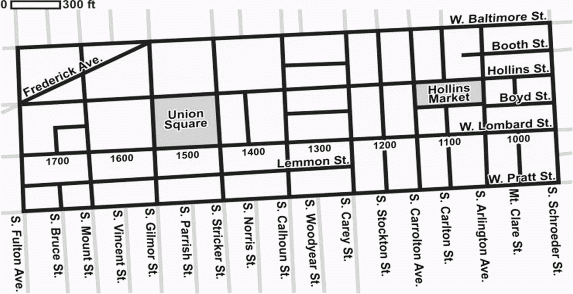
The District is bounded by South Fulton Street to the west and South Schroeder Street to the east, with north and south borders of West Baltimore and West Pratt Street
Pratt Street
Pratt Street is a major street in Baltimore. It forms a one-way pair of streets with Lombard Street that run west-east through downtown Baltimore. For most of their route, Pratt Street is one-way in an eastbound direction, and Lombard Street is one way westbound. Both streets begin in west...
s. Union Square proper, just west of the Market, is bounded by South Carey and South Fulton Streets from the east and west respectively, and by West Baltimore and West Pratt Streets to the north and south. The area is built on a grid street system which conforms to the original 1818 layout of the area. Zip Code: 21223.
Origins
Begun during the influx of English, Irish and German immigrationImmigration
Immigration is the act of foreigners passing or coming into a country for the purpose of permanent residence...
of the 1830s, the Union Square / Hollins Market Historic District is a dense area of rowhouses that includes Federal, Greek Revival and Italianate architectural styles. To the west, Union Square Park contains an ornate fountain and Greek Revival pavilion, and forms one of the two open spaces preserved in the neighborhood. Hollins Market, in the east, is an Italianate-style market house built in 1838 and expanded in 1864, and is the oldest city market still in operation.
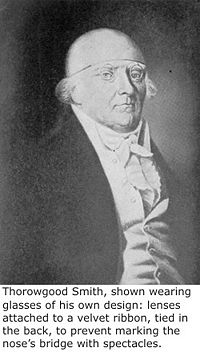
Palladian architecture
Palladian architecture is a European style of architecture derived from the designs of the Venetian architect Andrea Palladio . The term "Palladian" normally refers to buildings in a style inspired by Palladio's own work; that which is recognised as Palladian architecture today is an evolution of...
style popular in mid-18th century England and the United States. At the time, the property was on the outskirts of the city. Across town, next door to the Shot Tower
Phoenix Shot Tower
The Phoenix Shot Tower, also known as the Old Baltimore Shot Tower, is a red brick shot tower, tall, located near the downtown and Little Italy areas of Baltimore, Maryland. When it was completed in 1828 it was the tallest structure in the United States...
(1828), Smith’s principal residence is restored as the Circa 1790 Home, open to the public, and maintained by the Women’s Civic League.
Upon the death of the childless Smith, the villa with twenty-six acres passed to his wife, the former Mary Blaikley Stith (1750–1822) and then to a nephew, merchant and privateer John Donnell.
Donnell was responsible for parceling out the first plots of land for the construction of homes. Three sons of John Donnell leased grounds around the park, laid out specifications for houses, and graded and paved streets bordering the Square in the 1840s.
Dubbed “Millionaire’s Row,” the portion of Stricker Street facing the Square featured the Italianate residences of bankers, investors, and factory owners. Other variations of the Italianate style lined the blocks leading up to and surrounding the square. Less ornate homes were put up in groups on side and alley streets, but all shared many identical features such as cornices, marble steps, and iron work. Developers and homeowners attempted to build the most economic dwellings possible, so they crammed narrow rowhouses along every road, avenue and alley in the district. Common brick was often used on side walls, with hard surface English brick on the front. The largest rooms were typically the front parlors and master bedrooms – smaller rooms were placed to the rear.
Ceiling medallions, cornices, staircase millwork, and fireplace designs were individualized features, chosen from home order catalogs. Most of the wrought or cast ironwork in the neighborhood was made in the Hayward-Bartlett Factory near the B&O
Baltimore and Ohio Railroad
The Baltimore and Ohio Railroad was one of the oldest railroads in the United States and the first common carrier railroad. It came into being mostly because the city of Baltimore wanted to compete with the newly constructed Erie Canal and another canal being proposed by Pennsylvania, which...
Yards to the south of the neighborhood. The buildings were brick and low-scale – no more than three stories except for some commercial buildings. Evenly spaced doorsteps, windows, and doors, as well as continuous rooflines create the visual rhythms for which Baltimore rowhouses are noted. Although residential construction ended in the 1880s, commercial building continued into the early 20th century.
The two-and-one-half acres for the park was approved for that use and donated by the Donnells in 1847. The park is one block square, bordered by Lombard, Stricker, Gilmor, and Hollins streets. The landscape of Union Square – with its walkways, pavilion, fountain, and wrought iron lamps – recalls Victorian Era Baltimore. Architect John F. Hoss designed the iron Greek-style pavilion with fluted columns in 1850 – it covers a natural spring that was once accessible by steps and, at one time, supplied water to the B&O Railroad. The source of the name “Union Square” is uncertain but probably reflects the patriotic sentiment of this time before the Civil War
American Civil War
The American Civil War was a civil war fought in the United States of America. In response to the election of Abraham Lincoln as President of the United States, 11 southern slave states declared their secession from the United States and formed the Confederate States of America ; the other 25...
. Fog scenes of the Square, lights agleam over wet pavements and barren limbs, were often featured in local landscape artistry.
Willow Brook, the estate house, was acquired in 1864 by Emily Caton McTavish, granddaughter of Charles Carroll
Charles Carroll of Carrollton
Charles Carroll of Carrollton was a wealthy Maryland planter and an early advocate of independence from Great Britain. He served as a delegate to the Continental Congress and later as United States Senator for Maryland...
(a signer of the Declaration of Independence
United States Declaration of Independence
The Declaration of Independence was a statement adopted by the Continental Congress on July 4, 1776, which announced that the thirteen American colonies then at war with Great Britain regarded themselves as independent states, and no longer a part of the British Empire. John Adams put forth a...
), and daughter of General Winfield “Old Fuss and Feathers” Scott
Winfield Scott
Winfield Scott was a United States Army general, and unsuccessful presidential candidate of the Whig Party in 1852....
(a hero in the War of 1812
War of 1812
The War of 1812 was a military conflict fought between the forces of the United States of America and those of the British Empire. The Americans declared war in 1812 for several reasons, including trade restrictions because of Britain's ongoing war with France, impressment of American merchant...
and unsuccessful Whig
Whig Party (United States)
The Whig Party was a political party of the United States during the era of Jacksonian democracy. Considered integral to the Second Party System and operating from the early 1830s to the mid-1850s, the party was formed in opposition to the policies of President Andrew Jackson and his Democratic...
presidential candidate in 1852). Within a year, she donated it to the Roman Catholic Church
Roman Catholic Church
The Catholic Church, also known as the Roman Catholic Church, is the world's largest Christian church, with over a billion members. Led by the Pope, it defines its mission as spreading the gospel of Jesus Christ, administering the sacraments and exercising charity...
as a school for delinquent girls, under the administration of the Congregation of the Good Shepherd. Additions and renovations changed the original structure over the next 100 years until the school closed in 1965, the property was sold, and the buildings were dismantled. Willow Brook’s interior oval drawing room had long enjoyed national acclaim and, still intact, it was moved to the Baltimore Museum of Art
Baltimore Museum of Art
The Baltimore Museum of Art in Baltimore, Maryland, United States, was founded in 1914. Built in the Roman Temple style, the Museum is home to an internationally renowned collection of 19th-century, modern, and contemporary art. Founded in 1914 with a single painting, the BMA today has 90,000 works...
for public and permanent display. Steuart Hill Elementary School was constructed on the site. The area was designated a National Register Historic District in 1967, two years after Willow Brook was razed.
The original iron urns in the park were smelted down during World War II
World War II
World War II, or the Second World War , was a global conflict lasting from 1939 to 1945, involving most of the world's nations—including all of the great powers—eventually forming two opposing military alliances: the Allies and the Axis...
for the war effort. Economic decline occurred in the mid-20th until extensive rehabilitation began during a renaissance in the 1960s and 1970s. The Square benefitted from new lighting, shrubs, pink sidewalks, and cast iron benches installed during the 1970s.
Hollins Market
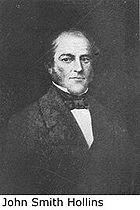
In 1863, the City Council appropriated $23,000 to erect the high-ceilinged Italianate red brick edifice as an addition to the old market house. As this was during the divisive time of the Civil War
American Civil War
The American Civil War was a civil war fought in the United States of America. In response to the election of Abraham Lincoln as President of the United States, 11 southern slave states declared their secession from the United States and formed the Confederate States of America ; the other 25...
, the council refused to consider any bid for the market’s construction that did not come from “parties... known to be thoroughly and unconditionally Union
Unconditional Union Party
The Unconditional Union Party was a loosely organized political entity during the American Civil War and the early days of Reconstruction. First established in 1861 in Missouri, where secession talk was strong, the party fully supported the preservation of the Union at all costs...
Men.”
By 1900, Hollins Market stretched from Poppleton to Carey Streets, with 160 inside and 180 outside stalls. Over the years, an assortment of West Baltimore butchers, various European and Asian immigrants with vendor traditions, and African-American merchants have all sold and purchased meats, farm-fresh produce, baked goods, and home-produced wares. Somewhat smaller today, the traditions and diversity of the market and the quality of goods still holds true. The 1990 Barry Levinson
Barry Levinson
Barry Levinson is an American screenwriter, film director, actor, and producer of film and television. His films include Good Morning, Vietnam, Sleepers and Rain Man.-Early life:...
film “Avalon
Avalon (1990 film)
Avalon is a feature film directed by Barry Levinson. It is a mostly autobiographical story of a family of Polish-Jewish immigrants to the United States who settle in Baltimore, Maryland, at the beginning of the 20th century. The movie follows the family as they grow, become more prosperous, and...
” depicts Hollins Market in its heyday.
Hollins Market, at 26 South Arlington Street, is open Tuesday through Thursday 7:00 a.m. to 6:00 p.m., Friday and Saturday from 6:00 a.m. to 6:00 p.m. It is closed Sundays and Mondays.
Malachai Mills
At 1504 W. Baltimore Street is the residence of Malachai Mills, a free-born African-American businessman in the early and mid-19th century. Mr. Mills was a prominent cabinetmaker and carpenter, providing furnishings and carpentry for many of the early homes in the neighborhood. The Union Square neighborhood is at the head of a preservation effort to revitalize this valuable structure as a “historic life museum” and as a preservation, fine arts, or urban studies field site for local universities.H. L. Mencken House
Designated a National Historic LandmarkNational Historic Landmark
A National Historic Landmark is a building, site, structure, object, or district, that is officially recognized by the United States government for its historical significance...
in 1985, this Italianate brick row house at 1524 Hollins Street was the home of one of Baltimore’s most famous citizens – noted Baltimore Sun journalist and author Henry Louis Mencken lived here from 1883 until his death in 1956. Mencken wrote of his home: “I have lived in one house in Baltimore for nearly 45 years. It has changed in that time, as I have – but somehow it still remains the same.... It is as much a part of me as my two hands. If I had to leave it I’d be as certainly crippled as if I lost a leg.”
After his death on January 26, 1956, his home was bequeathed to the University of Maryland
University of Maryland, Baltimore
University of Maryland, Baltimore, was founded in 1807. It comprises some of the oldest professional schools in the nation and world. It is the original campus of the University System of Maryland. Located on 60 acres in downtown Baltimore, Maryland, it is part of the University System of Maryland...
. In 1983 the City of Baltimore acquired the H. L. Mencken House from the University, in exchange for the Old Pine Street Station. With period furniture, his restored second-floor office, and backyard gazebo
Gazebo
A gazebo is a pavilion structure, sometimes octagonal, that may be built, in parks, gardens, and spacious public areas. Gazebos are freestanding or attached to a garden wall, roofed, and open on all sides; they provide shade, shelter, ornamental features in a landscape, and a place to rest...
, the H. L. Mencken House opened as part of the City Life Museums and a center for theatrical, literary and musical events. Although the City Life Museums closed in 1997, the landmark still displays a special commemorative plaque about its famous occupant. The house is currently not open to the public and now stands empty, a shuttered burden for the City of Baltimore, which plans to dispose of the property. The organization “Friends of the H. L. Mencken House” is leading efforts of several groups to redirect and expand the use of this neighborhood treasure.
Celebrating History
The park and fountain – as well as parts of Stricker, Hollins and Lombard streets – were transported back to the 1850s when Union Square played the title role in the lush 1997 movie adaptationWashington Square (film)
Washington Square is a 1997 American drama film directed by Agnieszka Holland. The screenplay by Carol Doyle is based on the 1880 novel of the same name by Henry James, which was filmed as The Heiress in 1949.-Plot summary:...
of Henry James’s
Henry James
Henry James, OM was an American-born writer, regarded as one of the key figures of 19th-century literary realism. He was the son of Henry James, Sr., a clergyman, and the brother of philosopher and psychologist William James and diarist Alice James....
biting novel Washington Square
Washington Square (novel)
Washington Square is a short novel by Henry James. Originally published in 1880 as a serial in Cornhill Magazine and Harper's New Monthly Magazine, it is a structurally simple tragicomedy that recounts the conflict between a dull but sweet daughter and her brilliant, domineering father...
from acclaimed director Agnieszka Holland
Agnieszka Holland
Agnieszka Holland is a Polish film and TV director and screenwriter. Best recognized for her highly political contributions to Polish cinema, Holland is one of Poland's most prominent filmmakers.-Personal life:...
.
The excitement continued in 1997 as the community celebrated the sesquicentennial of Union Square with a re-dedication of the park including the placement of a stone tablet commemorating the event at the foot of one of the pavilion columns. The celebration was highlighted with concerts and a marching band performance, and the dedication of a new park at Pratt and Gilmor streets.
Demographics
As of the censusCensus
A census is the procedure of systematically acquiring and recording information about the members of a given population. It is a regularly occurring and official count of a particular population. The term is used mostly in connection with national population and housing censuses; other common...
of 2000, there were 5,420 people residing in the neighborhood. The racial makeup of Union Square was 30.2% White, 63.4% African American, 0.0% Native American, 3.0% Asian, 1.1% from other races
Race (United States Census)
Race and ethnicity in the United States Census, as defined by the Federal Office of Management and Budget and the United States Census Bureau, are self-identification data items in which residents choose the race or races with which they most closely identify, and indicate whether or not they are...
, and 2.3% from two or more races. Hispanic or Latino of any race were 1.1% of the population. 38.0% of occupied housing units were owner-occuped. 34.9% of housing units were vacant.
49.5% of the population were employed, 7.4% were unemployed, and 43.7% were not in the labor force. The median household income was $30,765. About 14.9% of families and 27.5% of the population were below the poverty line.
External links
- Union Square Online
- Live in Baltimore - Union Square
- Union Square-Hollins Market Historic District, Baltimore City, including photo dated 2001, at Maryland Historical Trust
- Boundary Map of the Union Square-Hollins Market Historic District, Baltimore City, at Maryland Historical Trust
- Union Square listing at CHAP includes map
- Demographics from Neighborhood Indicators Alliance
- Baltimore, Maryland, a National Park Service Discover Our Shared Heritage Travel Itinerary
- Friends of the H. L. Mencken House
- Sowebo Arts Inc.
- The Irish Shrine at Lemmon Street
- Southwest Baltimore Charter School (SBCS)
- Mount Clare Museum
- Black Cherry Puppet Theater
- Union Square Christmas Cookie Tour
- Friends of West Baltimore Squares

